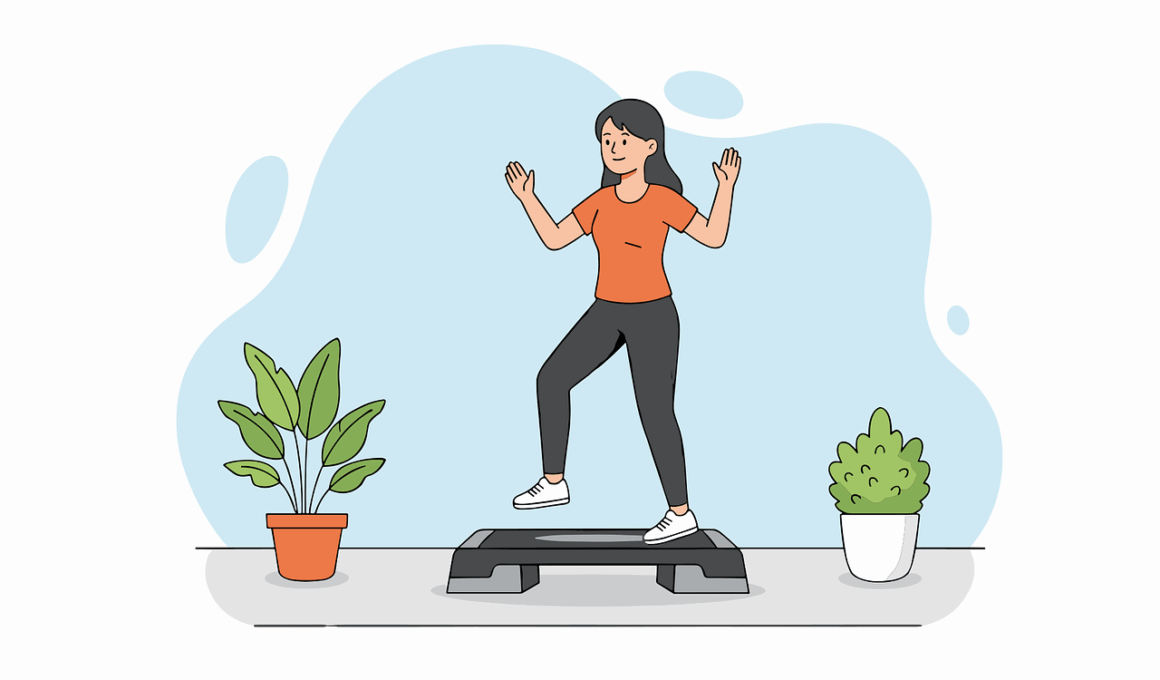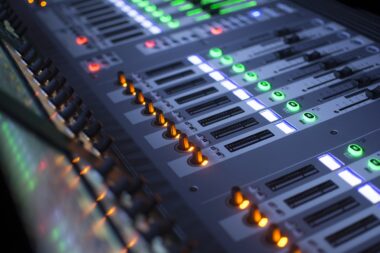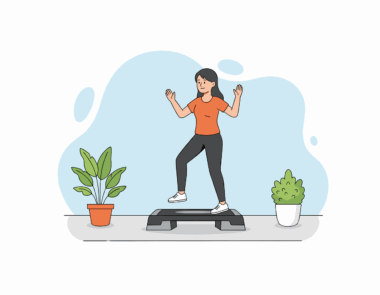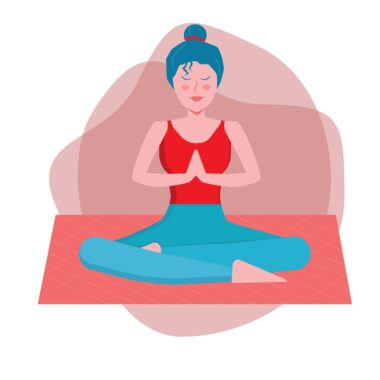Choreographing Dance Aerobics for Weight Loss Goals
Dance aerobics is not just a fun way to get moving; it can be an incredibly effective method for achieving weight loss goals. By combining dynamic movements with rhythmic music, participants can enjoy themselves while burning calories. When choreographing a dance aerobics routine, it’s essential to focus on exercises that elevate the heart rate and engage multiple muscle groups. Start by creating a sequence of steps that blend a variety of dance styles, such as salsa, jazz, and hip-hop, to keep it interesting. Incorporating interval training can also enhance calorie burn, alternating between high-energy dance routines and slower recovery periods. Make sure to emphasize core strengthening moves, as they support overall body stability. Remember, the goal is not only to fulfill fitness aspirations but also to foster a love for dance. This joy can motivate individuals to stick with their routine long-term. Incorporate feedback from participants to improve future classes and adjust choreography accordingly to their skills. Keeping the choreography accessible will encourage participation and ensure that the participants are having fun while they work towards their weight loss goals.
Essential Elements of Effective Choreography
When crafting effective dance aerobics routines, consider several key elements that contribute to a successful session. First and foremost, the selection of music is crucial. Choose tracks that are upbeat and resonate with the energy you want to create in the class. The rhythm of the music should sync with the movements to create a smooth flow. Next, consider the choreography’s complexity. While some participants may love challenging routines, others may prefer simpler, more accessible moves. Ensure a good mix to cater to all skill levels. Structure the choreography into sections, incorporating warm-up, main workout, and cooldown periods. These segments help participants mentally prepare and gradually transition during the class. Furthermore, include motivational cues throughout the routine to pump up energy and encourage participants. Don’t forget about visual aids such as mirrors for everyone to see their movements clearly. Finally, the most important factor is to maintain a positive and supportive atmosphere. This will ensure participants feel welcomed and excited to come back, ultimately assisting them in achieving their weight loss targets.
Incorporating variety into dance aerobics routines is vital for maintaining engagement and interest amongst participants. A well-rounded routine should feature a variety of moves that target different muscle groups and switch up the pace throughout the session. One way to introduce variety is by alternating between high-intensity bursts and lower intensity recovery periods. This not only enhances cardiovascular fitness but also keeps students guessing and entertained. Exploring different styles, such as Latin dance, ballet, or even contemporary, can inject fresh energy and make each session unique. Additionally, consider including props such as weights or resistance bands to add strength training elements into the routine. Offering optional modifications for some moves is a great way to include all fitness levels, ensuring that everyone can challenge themselves appropriately without feeling overwhelmed. Routines should also evolve based on participant feedback; this way, you can adapt to the preferences of your audience. Encouraging students to suggest their favorite songs or styles may create a sense of ownership and excitement about the classes, motivating them further towards their personal weight loss journey.
The Importance of Warm-Ups and Cooldowns
No dance aerobics routine is complete without warm-ups and cooldowns, critical steps that ensure safety and maximize effectiveness. Starting with a 5 to 10-minute warm-up is essential to prepare participants’ bodies for more vigorous activity. This period allows muscles to become more elastic and primes the cardiovascular system for upcoming challenges. Opt for gentle stretching and dynamic movements that mimic the anticipated workout. Similarly, a cooldown is equally important after a high-energy session. Gradually reducing the intensity helps to lower the heart rate and minimize the risk of injury. In this phase, gentle stretching not only relaxes the muscles but also aids recovery, enhancing flexibility. Encourage participants to reflect on the progression they’ve made during the class and remind them of the importance of hydration post-workout for recovery as well. Including warm-ups and cooldowns demonstrates professionalism and knowledge of health and safety practices, which instills trust among participants. When they see that their instructor considers their well-being, they are more likely to feel safe and secure while pursuing their fitness objectives.
Participant feedback plays a crucial role in honing effective dance aerobics routines. Regularly gathering input helps to identify what participants enjoy and what potentially needs improvement, making each class a better experience. Conduct surveys or quick feedback sessions after classes to facilitate conversation about their favorite moves, music, or class structure. Additionally, create spaces where participants can communicate their thoughts about the routine’s difficulty and pacing. This approach enables instructors to modify their choreography based on real-time feedback. It’s also advisable to build a sense of community by encouraging participants to support each other and share their challenges and successes. Consider hosting occasional themed classes that align with participant interests. This approach can foster greater camaraderie and inspire continued attendance. Finally, keeping case studies on potential improvements ensures the routines continuously evolve according to workshop participants’ preferences. Remember, the ultimate goal is transformation, both physically and mentally; thus, maintaining open lines of communication is vital in crafting personalized experiences in dance aerobics.
Benefits of Dance Aerobics for Weight Loss
Dance aerobics offers numerous benefits beyond mere enjoyment. Not only does it provide a high-energy workout that effectively burns calories, but it also enhances cardiovascular health and builds muscle strength. Engaging in regular dance aerobics can help improve overall flexibility while promoting balance, which is especially important for injury prevention. The combination of movement and rhythm in dance aerobics creates a unique opportunity to experience physical fitness in an uplifting environment. Additionally, this form of exercise can significantly boost mental health by releasing endorphins that induce feelings of happiness and satisfaction post-workout. Social interactions during classes foster a sense of belonging, which can motivate participants to stick to their fitness regimes longer. Moreover, dance aerobics encourages body positivity as individuals focus on movement and expression rather than on weight alone. This shift in perspective can lead to healthier habits beyond the workout, influencing dietary choices and lifestyle adjustments without feeling like an imposition. In summary, the holistic benefits of dance aerobics create an enjoyable and effective pathway toward achieving weight loss goals while improving overall well-being.
Finally, to create a sustainable dance aerobics program, it’s crucial to keep it accessible, enjoyable, and effective. Instruct participants to set realistic weight loss goals that align with their individual fitness levels and preferences. This personalized approach encourages them to embrace the choreography without feeling overwhelmed, making the process more enjoyable. Incorporate periodic challenges or events to bring excitement and foster a sense of achievement; this could include dance showcases or themed workouts that attract participants’ attention and participation. Consider providing educational resources regarding nutrition and wellness so participants understand the importance of a balanced lifestyle alongside regular aerobics classes. Building a loyalty program that rewards attendance can also be beneficial as it keeps participants engaged and returning for more. A well-rounded approach to dance aerobics blends fun, community, and a commitment to health. Ultimately, fostering a culture of celebration around fitness encourages individuals to be active, develop healthy habits, and appreciate their journey toward weight loss and overall well-being.
Making each dance aerobics class unique will encourage retention and excitement among participants on their weight loss journey. One method to achieve this is through themed classes that align with different cultural styles or current trends. Themes might include popular music eras or international dance styles, which add an engaging element to workouts. Furthermore, consider varying class durations or including special workshops that focus on specific dance techniques or muscle groups. Such additions keep routines fresh and can attract different demographic groups, expanding your audience base. Offering occasional outdoor classes or community events may also introduce a social aspect to dance aerobics, thus enhancing participant commitment. The social environment not only strengthens connections between individuals, but it also reinforces accountability, making everyone more likely to return consistently. Additionally, partnering with local businesses for rewards or discounts (such as healthy restaurants) can create excitement and provide incentives. Overall, versatility in design and delivery ensures that your dance aerobics classes remain dynamic, welcoming, and, most importantly, effective in helping participants reach their weight loss and fitness goals.





